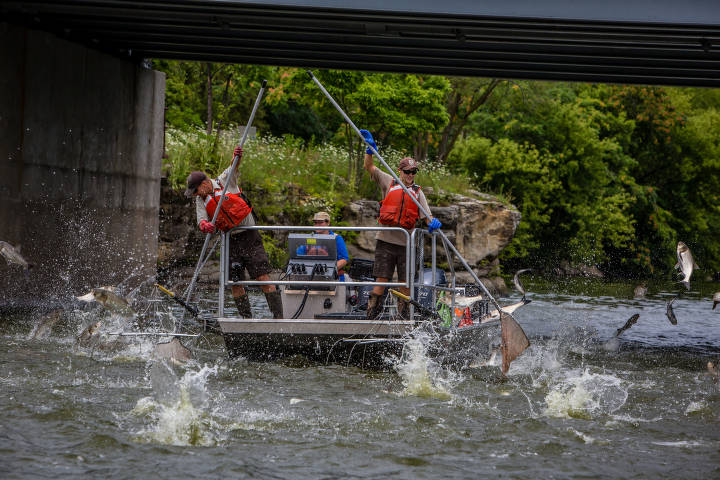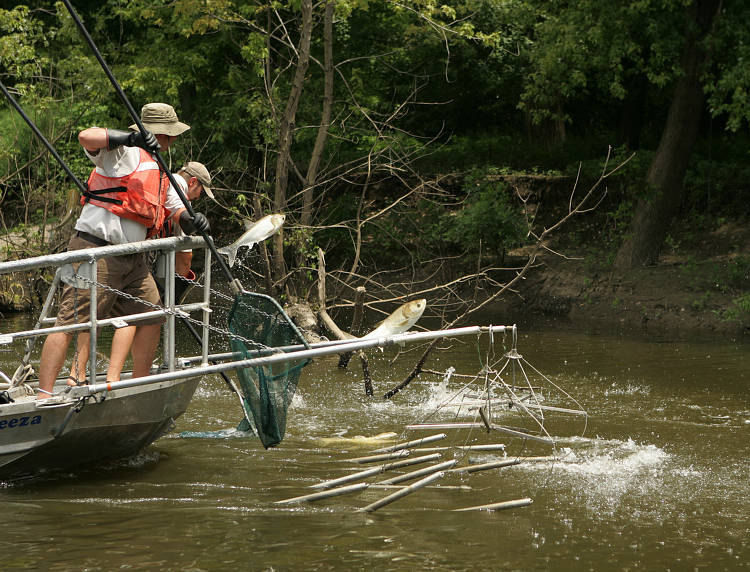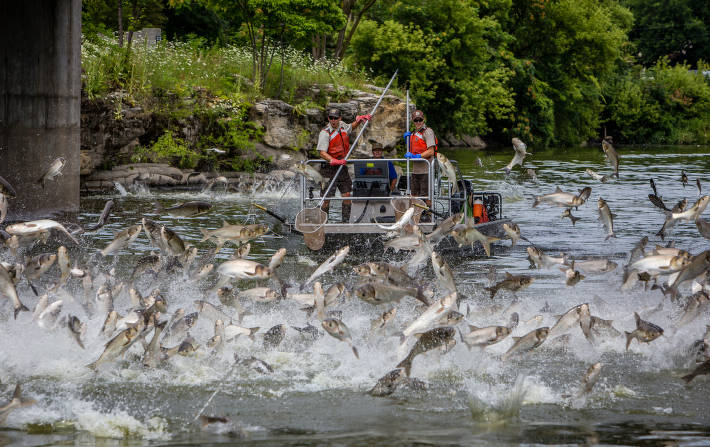Will Washington do what it takes to prevent yet another invasive species from wreaking havoc on fisheries?
Most of us have seen the videos of flying carp.
As a bowhunter, my favorites are the ones where people use arrows to target the leaping fish. Most of the time the video ends with a few fish whacking the shooter or the video-taker in the face.
But these carp are not a laughing matter.
The rapidly reproducing invaders are wreaking havoc on ecosystems, displacing native species and devouring the natural resources upon which those species rely.

Invasive carp are knocking on the doors of the Great Lakes system. If they get there, the results could be incredibly harmful. The Great Lakes are an economic engine for the nation. Their commercial, recreational and tribal fisheries alone are valued at more than $7 billion per year and support more than 75,000 American jobs.
That’s why Trout Unlimited is among the many groups advocating for critical measures to keep invasive carp from reaching the Great Lakes. And why we are urging our representatives in Congress to fully fund an innovative project at the Brandon Road Lock and Dam on the Des Plaines River in Joliet Illinois — a project that serves as our last, best chance to block carp from the Great Lakes.
We don’t have much time.
Congress holds the key to stopping the spread of invasive carp to the Great Lakes. Please contact your Member of Congress and ask them to help protect the Great Lakes—some of the most remarkable natural resources on the planet.
“Invasive carp” is a term that describes the bighead, black, silver and grass species of carp, which are distinct from the Eurasian common carp brought to North America in the early 19th century.
The Great Lakes ecosystem is complex and already disturbed by non-native species. One of the great lessons of the past is that when you push complex ecological systems in one place, they will bulge in another. Ironically, for example, these carp species were introduced to the U.S. in the 1960s, because they eat vegetation, and were considered more environmentally-friendly than herbicides.

The fish were thought to be sterile. They were not. They reproduced and, when ponds were flooded, they ended up in the Mississippi River system.
Just a few decades later, they made their way to the Chicago Area Waterway System, a series of dams and locks that connects the Mississippi to Lake Michigan.
History is replete with examples of the negative impact of invasive species in the Great Lakes, from sea lampreys to zebra and quagga mussels to round gobies.
Because of their size, appetite and speed at which they can spread, invasive carp have the potential to further disrupt an ecosystem already impacted by established invasive species.
The Army Corps of Engineers believes its plans for the Brandon Road Lock and Dams complex can keep the fish from the lakes. The system uses a high-tech, multi-prong approach that includes air bubble curtains, electrical barriers and acoustic fish deterrents.
The estimated price tag is $778 million, a significant investment to be sure, but one that is necessary and sensible given the stakes.

The Infrastructure Investment and Jobs Act will provide partial funding for the project, but there remains a gap of about $600 million that would need to be cost-shared with the federal government.
We at Trout Unlimited are among the many organizations that believe that Congress should close that gap through legislation called the Water Resources Development Act of 2022. This bill is currently being debated by our elected officials in Washington. That’s why we’re urging our members and supporters to contact their legislators to urge them to support full federal funding for this project.
Congress has been key in bolstering the progress of this effort thus far. It appropriated millions of dollars for the U.S. Army Corps to conduct feasibility studies, which proved the Brandon Road project to be viable. Great Lakes advocates like U.S. Sen. Debbie Stabenow (D-MI) have championed this issue and helped secure congressional support and investment. We thank everyone in Congress who has assisted the effort so far for their continued support of Great Lakes protection.
Great Lakes facts
- The Great Lakes support 139 native species, including lake trout, walleye, large and smallmouth bass, and brook trout. Of these, 61 species are considered to be threatened or endangered.
- The five Great Lakes — Superior, Michigan, Erie, Ontario and Huron — contain 83 percent of North America’s freshwater, and 21 percent of the world’s freshwater.
- The Great Lakes have a combined shoreline of 10,210 miles.
- The Great Lakes region’s gross domestic product value is $5.8 trillion, accounting for roughly 28 percent of combined U.S. and Canadian economic activity.



